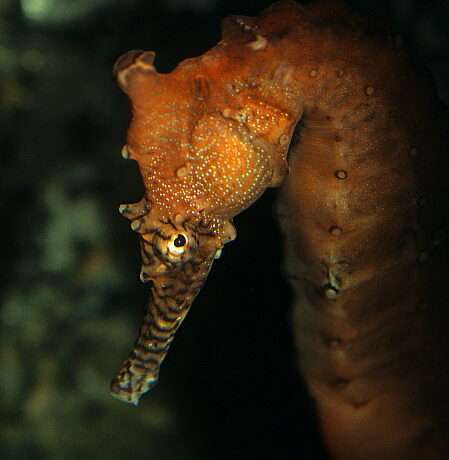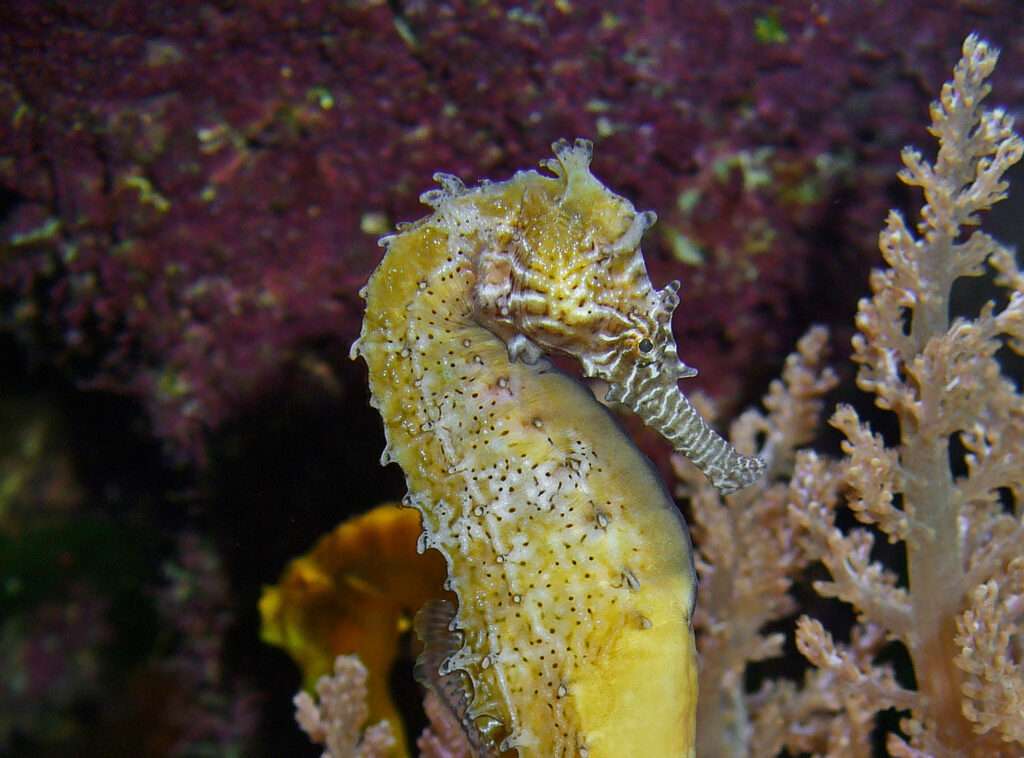
This fish belonging to the family Syngnathidae is called the narrow-bellied seahorse, or Hippocampus angustus. A person can reach a height of 22 cm. They can reproduce sexually. It only exists in Australia. Open waters are where it naturally lives. . Other names are Western Australian Seahorse, Narrow-bellied Seahorse, and Slender Seahorse. Some facts are: located in protected bays. White, orange, or yellow in color with light patches and occasionally a network of thin, dark lines; also has narrow lines across snout. Monogamous ovoviviparous. Under the tail, the male holds the eggs in a brood pouch. They are only found in the northwest of Australia, from Torres Strait to North West Cape, in the Eastern Indian Ocean.
Description
This species’ individuals typically measure 16 centimeters (6.3 in) in length, but they have been known to reach lengths of 22 centimeters (8.7 in). Their large nose, high coronet, well-developed spines, and slender bodies can recognise them. The coloring is frequently grey to brownish with scribbly, net-like markings in white, yellow, orange, or brown on the head and body. There are five to six distinct, erratic dark stripes on the snout.

Habitat
The marine fish species Hippocampus angustus, which belongs to the family Syngnathidae, is also known as the Australian seahorse, the western spiny seahorse, and the narrow-bellied seahorse. It can be found in the waters around Australia, from Perth to Hervey Bay, as well as in the southern Torres Strait in Papua New Guinea. It resides at depths of 3-63 meters on soft corals and soft-bottom substrates near coral reefs (9.8–206.7 ft).
Food
Like other seahorses, it is anticipated that it would eat tiny crustaceans for food.
Reproduction
The mating habits of this particular species of seahorse are monogamous. Due to the dispersal of the population, the males only fertilize the eggs of one female during the mating season. While certain seahorses can be polygamous because of their higher population density, this particular species is more sporadic and has a high reproductive cost. As a result of the risk of reproduction brought on by distributive and predatory pressures, this breed can only have one partner and typically finds the same mate season after season.
Table





